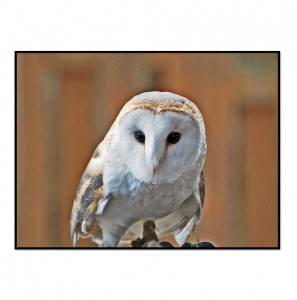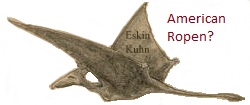Tag: owl
Night Light Influences a Human Hormone
by admin on Jan.19, 2011, under Environment
Keeping the lights on at night may actually be bad for your health, according to recent research and the Science News article “Night Owls May Want to Dim Their Lights.”
More than 100 young adults volunteered for a roughly 10-day research trial during which each took turns living in a light-controlled room at Brigham and Women’s Hospital in Boston. From midnight until 8 a.m. the room was totally dark. At other times, researchers from Harvard Medical School tinkered with the room’s lighting. . . .
When their room’s lighting had been bright, the participants made, on average, 71 percent less melatonin in the hours before sleep.
An interesting irrelevancy to human sleep and hormone production is the name of the article, “Night Owls May Want to Dim Their Lights,” for research by the Australian bird expert Fred Silcock relates to barn owls that have bioluminescence.
American Ghost Lights
by admin on Oct.20, 2010, under Strange
Common barn owls may be responsible for many of the reported “ghost lights” in the United States. According to the nonfiction book author Jonathan Whitcomb, of Long Beach, California, the Gurdon Light of Arkansas, the Ghost Light of Masters Knob (Tennessee), and the Hornet Light of Missouri are all strange flying lights whose behaviors resemble those of Tyto Alba, the barn owl.
 The idea that some barn owls have intrinsic bioluminescence is not original with Whitcomb; the Australian Fred Silcock has done extensive research on certain sightings of Min Min lights in Australia. The sightings that especially caught the attention of Silcock were those that suggested hunting barn owls and those in which a glowing barn owl was actually observed.
The idea that some barn owls have intrinsic bioluminescence is not original with Whitcomb; the Australian Fred Silcock has done extensive research on certain sightings of Min Min lights in Australia. The sightings that especially caught the attention of Silcock were those that suggested hunting barn owls and those in which a glowing barn owl was actually observed.
Whitcomb carried Silcock’s findings over onto the America continent, comparing characteristics of various strange lights. Many of those flying lights were seen over railroad tracks, with the same weaving motions common with barn owls. The conclusion seemed obvious.
 But Whitcomb is an author of cryptozoology books about living pterosaurs, not owls. He has explained that a minority of the reports of American ghost lights do not suggest owls but something far stranger. In Marfa, Texas, the mystery lights have fascinated investigators for many years. But the behavior or the lights does not suggest owls but ropens, and that nocturnal flying creature is said to be a living pterosaur of Papua New Guinea. The ropen is not yet classified by Western science but is a cryptid like the Bigfoot and Nessie.
But Whitcomb is an author of cryptozoology books about living pterosaurs, not owls. He has explained that a minority of the reports of American ghost lights do not suggest owls but something far stranger. In Marfa, Texas, the mystery lights have fascinated investigators for many years. But the behavior or the lights does not suggest owls but ropens, and that nocturnal flying creature is said to be a living pterosaur of Papua New Guinea. The ropen is not yet classified by Western science but is a cryptid like the Bigfoot and Nessie.

